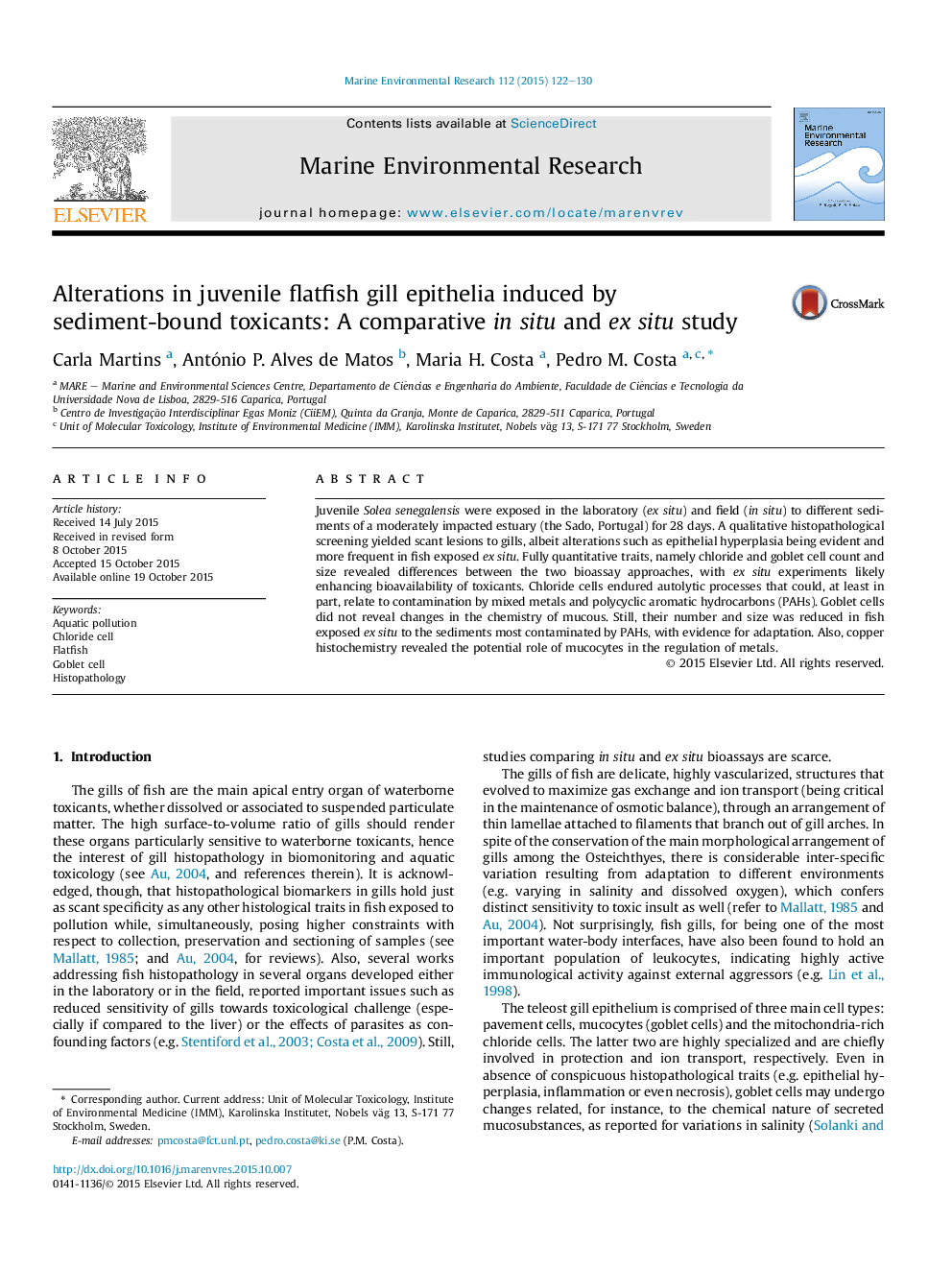| Article ID | Journal | Published Year | Pages | File Type |
|---|---|---|---|---|
| 4550646 | Marine Environmental Research | 2015 | 9 Pages |
•Juvenile soles were exposed to contaminated estuarine sediments in situ and ex situ.•Laboratory assays yielded more pronounced affects than in situ bioassays.•Major gill changes were scarce but gill epithelial cells underwent changes ex situ.•Chloride and goblet cell metrics were altered by exposure but revealed adaptation.•Chloride cell suffered autolytic processes while metals were found within mucocytes.
Juvenile Solea senegalensis were exposed in the laboratory (ex situ) and field (in situ) to different sediments of a moderately impacted estuary (the Sado, Portugal) for 28 days. A qualitative histopathological screening yielded scant lesions to gills, albeit alterations such as epithelial hyperplasia being evident and more frequent in fish exposed ex situ. Fully quantitative traits, namely chloride and goblet cell count and size revealed differences between the two bioassay approaches, with ex situ experiments likely enhancing bioavailability of toxicants. Chloride cells endured autolytic processes that could, at least in part, relate to contamination by mixed metals and polycyclic aromatic hydrocarbons (PAHs). Goblet cells did not reveal changes in the chemistry of mucous. Still, their number and size was reduced in fish exposed ex situ to the sediments most contaminated by PAHs, with evidence for adaptation. Also, copper histochemistry revealed the potential role of mucocytes in the regulation of metals.
